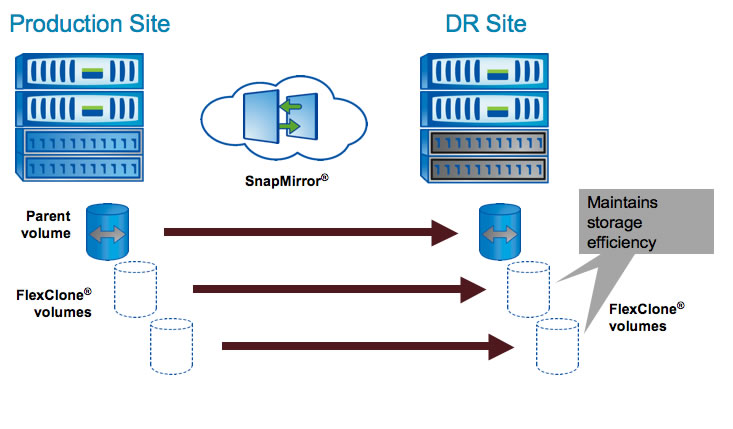Best Practice Guide For Microsoft Sql Server On Netapp Storage
Best Practice Guide for Microsoft SQL Server with NetApp EF-Series. Windsor Ef Elongated on this page. To simplify the storage provisioning, NetApp recommends using the SANtricity automatic. Microsoft® SQL Server® is a powerful and cost-effective database solution. Scalable NetApp® storage. Best Practice Guide for Microsoft SQL Server on NetApp.
NetApp uses cookies to improve and customize your online experience. • NetApp uses cookies to improve and customize your online experience. In order to tailor our communications with you to make sure that we are addressing your specific needs and not overwhelming you with unwanted information, we use cookies to handle propensity management. A cookie is a piece of information that is stored on your computer's hard drive by your Web browser.
In order to disable the cookies you must check the box below and explicitly decline consent. Scarface The World Is Yours Pc Game Torrent. Disable my cookies. View our for more details about how we use cookies. Key Points • Increase database throughput and ROI with NetApp flash-based options.


• Eliminate planned and unplanned downtime via nondisruptive operations. • Optimize SQL Server storage according to your business requirements. • Eliminate performance microtuning and reduce administrative overhead. • Deploy submillisecond latency solutions for data warehouse environments. Accelerate your business success with best-in-class NetApp solutions for Microsoft SQL Server—in the data center or cloud. Realize the predictable performance and database flexibility you need to run a variety of Microsoft® SQL Server® workloads. NetApp® solutions deliver manageability, scalability, and data protection—both on premises and in the cloud.
Run your SQL Server environment on NetApp All Flash FAS, HCI or products to: • Improve query response time. • Reduce storage and data management costs. • Accelerate application test/dev and deployment. • Consolidate hundreds of databases on a single system. Our solutions for SQL Server conform to Microsoft best practices, providing: • Faster speed of business—Decrease database latency by up to 95%. Increase database throughput by up to 4x. • Better cost management—Consolidate servers and databases by up to 50%.
Decrease database license fees by up to 50%. • Efficiency and ROI—Achieve a seamless path to hybrid cloud. Reduce database copy times from hours to minutes. Reduce time to spin up/down DB test/dev copies by 80%. Increase CPU utilization by up to 4x.
Read the to learn how to build a high-performance scalable database. Download Microsoft SQL Server 2012 or Microsoft SQL Server 2014 versions: • • Find out how NetApp SolidFire systems can help improve. Read the solution brief to learn how you can automate and simplify your data management and reduce costs using. [*] NetApp HCI is available worldwide, with a few exceptions, including: Iran, North Korea, Sudan, Syria, Cuba, Crimea, China, Russia, Belarus, Kazakhstan, Armenia and Kyrgyzstan. Check with your local sales representative for the latest information.
Published: October 17, 2006 Proper configuration of IO subsystems is critical to the optimal performance and operation of SQL Server systems. Below are some of the most common best practices that the SQL Server team recommends with respect to storage configuration for SQL Server. Understand the IO characteristics of SQL Server and the specific IO requirements / characteristics of your application.
In order to be successful in designing and deploying storage for your SQL Server application, you need to have an understanding of your application’s IO characteristics and a basic understanding of SQL Server IO patterns. Performance monitor is the best place to capture this information for an existing application.
Some of the questions you should ask yourself here are: • What is the read vs. Write ratio of the application? • What are the typical IO rates (IO per second, MB/s & size of the IOs)? Monitor the perfmon counters: • Average read bytes/sec, average write bytes/sec • Reads/sec, writes/sec • Disk read bytes/sec, disk write bytes/sec • Average disk sec/read, average disk sec/write • Average disk queue length • How much IO is sequential in nature, and how much IO is random in nature? Is this primarily an OLTP application or a Relational Data Warehouse application?
To understand the core characteristics of SQL Server IO, refer to. More / faster spindles are better for performance • Ensure that you have an adequate number of spindles to support your IO requirements with an acceptable latency. • Use filegroups for administration requirements such as backup / restore, partial database availability, etc. • Use data files to “stripe” the database across your specific IO configuration (physical disks, LUNs, etc.). Try not to “over” optimize the design of the storage; simpler designs generally offer good performance and more flexibility.